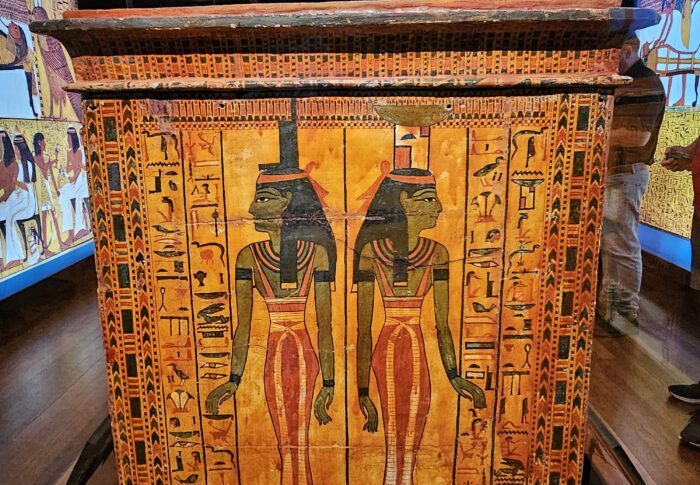
Tasmania 2023 – Week 2 Richmond to Triabunna
Leaving our big comfy bed, snuggly warm, we leave Richmond for Triabunna so we can head out to Maria Island.
As we are driving through the countryside, we get an alert on the car. Both of us thinking “what now” as we have had a few of those on this trip e.g. oil service due. Anyways, having had the battery replaced yesterday, we were a bit concerned but it was simply the car telling us it was 4 degrees outside with a lovely blue snowflake for emphasis.
We drive through some wonderfully named cuttings – Bust-me-gall hill and break-me-neck hill.
We are driving east into the sun which was initially okay, before we went through the range towards the ocean then we are in full sun. We are now on the Great Eastern Drive Journey. As we embark on this part of the various drives, we move through Orford then on to Triabunna where we will stay for 2 nights but more importantly where we embark from later in the morning to go to Maria Island via Ile de Phoques Nature Reserve where we observe the seals. There is no leaving the boat to go to the seals. These guys are cautious and we do not want a stampede. There are several hundred fur seals sunning themselves, playing in the water and doing whatever it is seals do. They are wonderful to observe. We see some Sea Eagles too. The colour of the water is turquoise and sapphire. We circle Ile De Phoques and pull into some coves – seriously amazing! The colours here are something else, the whole experience is superb. We have morning tea in a quiet cove, watching the seals play in the water with the aroma of seal and bird drifting through and cutting the sea air from time to time.
I take the most photographs today, ever. So many seal photographs. It makes it challenging trying to shoot from a bobbing stable surface with a large lens which reaches 600m – quite weighty and challenging to focus at times although my trusty camera, thankfully, has autofocus set. The aim and focal point are somewhat patchy at times.
We then go across open water to Maria Island where we pass down the western side of the island to a lovely inlet for lunch. As I have said before, “wow” is such an inadequate word but also can be quite descriptive of what you see. There was a cement works on the island and previously a hotel – you wouldn’t know it now. The silos you see are where the lime was stored and the damage at the bottom of them is all they could achieve when they tried to blow them up, after the limeworks/ cement works closed in the early 20th century. The island is an old convict penitentiary. It seems nicer than Sarah Island was for those early people, sent out here for punishment for what seems, today, such minor offences.
The country never ceases to amaze me. The sights we see today are nature’s paintbox. We see layered limestone and dolomite rock and amazing geological formations and the painted cliff. It really is something to behold. We travelled with Maria Island Cruises. They provide a fabulous day out and some interesting commentary. They can be found at mariaislandcruises.com.au. Can I suggest that you obtain a National Parks Pass or this is included, for the day, in the price. The whole experience was fantastic. We were blessed with good weather and wind that dropped enabling us to have the seal experience earlier in the day.
There will be plenty of seal “porn” in the photos attached to this post. You will also find plenty of wombats too, along with some kangaroos, a bandicoot and a paddymelon. There are some gorgeous birds too – the Cape Barren Geese and a green rosella (found only in Tasmania). Did you know wombats make square poo? It’s pretty cool to see.
The convict buildings on Maria Island have been preserved. The old Commissariat is the information hub. The prison building is now dormitory accommodation. The Coffee Palace has been preserved as it was when the place was thriving – something else. The pine tree walk you go through as you walk up to the settlement area was planted a couple of hundred years ago. The low-level branches provide extra protection for the burrowing animals like the furry moving rocks that are scattered about, known as wombats. We really do have it good these days.




